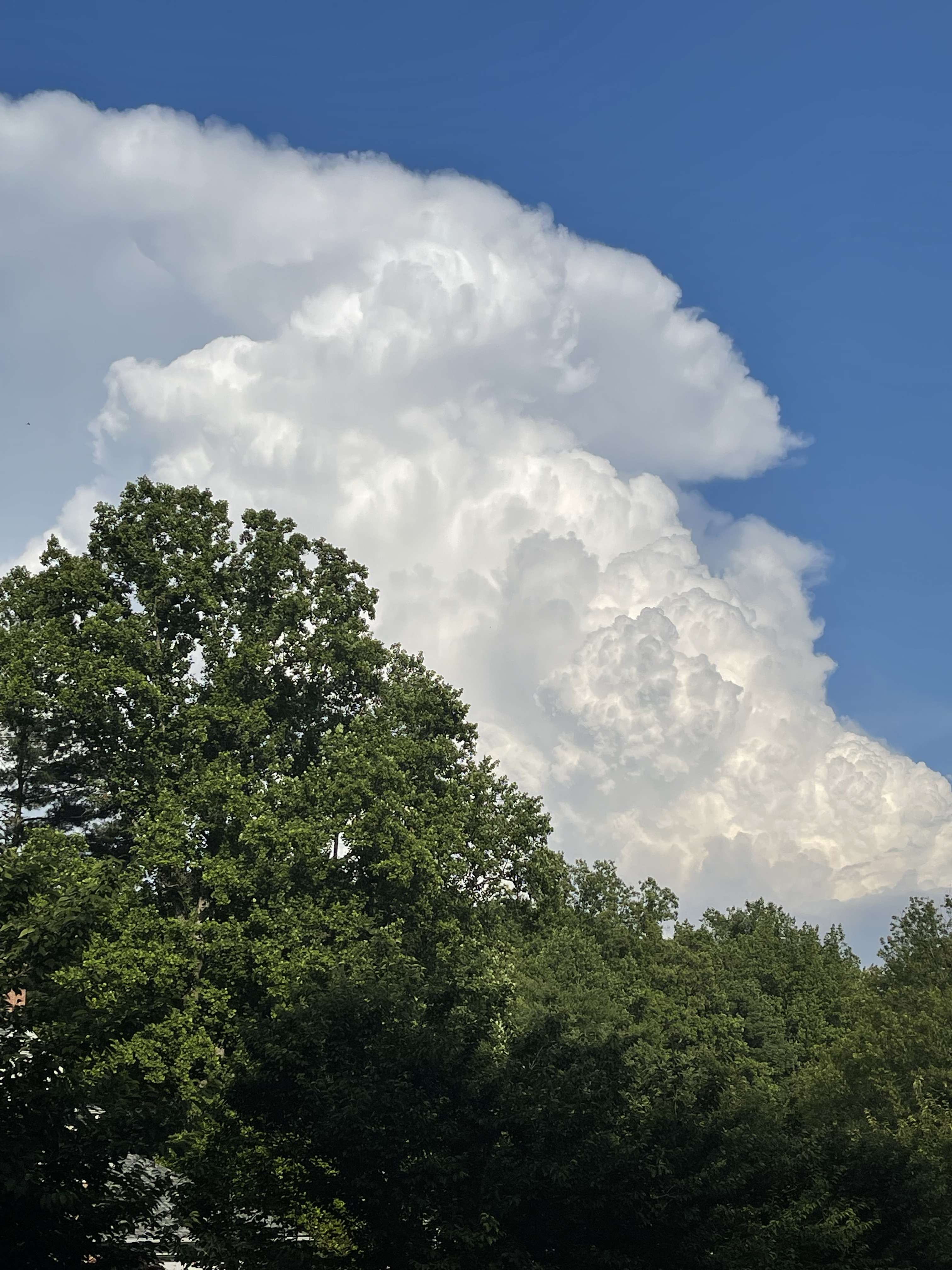-
Posts
44554 -
Joined
-
Last visited
-
Days Won
262
Everything posted by Phil
-

August 2016 Observations and Model Discussion for the Pacific Northwest
Phil replied to Geos's topic in West of the Rockies
I'd put money down that the sensor is creeping warm. Whether that's the only issue, I don't know, but my hunch is that it's a combination of factors. Regarding the sensor issue, I've seen this happen so many times..I work with these multipurpose ultrasonic sensors everyday. I have eight sensors, all cross calibrated and tuned. They can perform beautifully for months, then one will randomly start to creep (usually the ones exposed to solar radiation) and will either need to be recalibrated or replaced entirely. -

August 2016 Observations and Model Discussion for the Pacific Northwest
Phil replied to Geos's topic in West of the Rockies
It's funny...just before the DCA sensor was replaced, I was debating with some guy throwing up the exact same talking points (microclimates, Potomac River, etc). It's fairly easy to pick out inconsistencies with regards to contaminated temperature measurements. Do I think AST averaged cooler than normal in July? No, I actually don't, given the topographic and thermodynamic influences that are obviously present there. Do I believe they failed to pull off a single negative daily departure? No, because that would be thermodynamically unreasonable on a number of occasions. -

August 2016 Observations and Model Discussion for the Pacific Northwest
Phil replied to Geos's topic in West of the Rockies
I can't prove the sensor is faulty without cross calibrating it myself. All I know is that AST is running unreasonably warm given the airmasses in question. Whether it's a sensor issue, or a larger issue involving UHI, warm SSTs, aging sensors, or a combination of the three, I don't know (and have no way of quantitatively knowing). -

August 2016 Observations and Model Discussion for the Pacific Northwest
Phil replied to Geos's topic in West of the Rockies
Do you have asperger's or something? You're mistranslating a ton of information here. You're mouthing off about "pattern nuances" that you have yet to even describe or quantitatively apply through the time period of reference. -

August 2016 Observations and Model Discussion for the Pacific Northwest
Phil replied to Geos's topic in West of the Rockies
If you want to present information coherently, make sure the information you're providing is accurate first. I never said AST averaged +5 for July. I was referring to the daily departure on 7/11 in relation to the upper air temperatures in order to draw attention to the underlying divergence. BTW, that was actually a typo, I meant to write +3 for 7/11, not +5. At 1100ft, they're not going to be very far off given the lack of a gradient or airmass change. Looking up through 5000ft, the it's the same story. Just a solidly cool airmass. Don't even try. -

August 2016 Observations and Model Discussion for the Pacific Northwest
Phil replied to Geos's topic in West of the Rockies
This data is also aggregated in the RATPAC and RAOBCORE datasets for these locations. Simple stuff. Whatever the cause of those warm surface anomalies, it's almost certainly anthropogenic (whether it be sensor issues or UHI). -

August 2016 Observations and Model Discussion for the Pacific Northwest
Phil replied to Geos's topic in West of the Rockies
Read more carefully. I was speaking of a particular day in July (7/11) where AST registered a +3 in the face of a -8 @ 1100ft on the PDX sounding. I'm traveling right now so don't have the numbers in front of me, but feel free to browse the ESRL site. -

August 2016 Observations and Model Discussion for the Pacific Northwest
Phil replied to Geos's topic in West of the Rockies
Stations in OR during July. More than a few outliers, but the vast majority registered numerous daily negative departures. Only one station failed to record a negative daily departure. http://i724.photobucket.com/albums/ww243/phillywillie/Mobile%20Uploads/9D54E2E6-9372-4AFD-BE5B-32394AE8E112_zpsk1uxnabc.jpeg -

August 2016 Observations and Model Discussion for the Pacific Northwest
Phil replied to Geos's topic in West of the Rockies
I know when the temperature anomaly @ 1100ft (at given observational site) is at/below -8F, and a sensor at the surface, at that given site, is reading an anomaly of +5F, there's a legitimate problem. If you can't see that, I'm sorry. -

August 2016 Observations and Model Discussion for the Pacific Northwest
Phil replied to Geos's topic in West of the Rockies
That's sort of a low-resolution graphic. There are higher resolution upper air and surface datasets on ESRL. That said, yes, the AST temperature spread for July is laughable. -

August 2016 Observations and Model Discussion for the Pacific Northwest
Phil replied to Geos's topic in West of the Rockies
When were those sensors (in particular) last replaced? I can't find anything on them. -

August 2016 Observations and Model Discussion for the Pacific Northwest
Phil replied to Geos's topic in West of the Rockies
His argument is fairy straightforward, dude. -

August 2016 Observations and Model Discussion for the Pacific Northwest
Phil replied to Geos's topic in West of the Rockies
Whether it's the sensor, surrounding anthropogenic contamination(s), or something else entirely, I do not believe either of those temperature spreads given the upper air data. It doesn't make physical sense to have days run +5 at the surface while running -8 merely 1000ft up, unless you're a believer in magic and/or witchcraft. -

August 2016 Observations and Model Discussion for the Pacific Northwest
Phil replied to Geos's topic in West of the Rockies
You haven't made a lick of sense at any point in this discussion, no offense. I've seen nothing but handwaving and strawman analyses from you, at least in regards to this issue in particular. -

August 2016 Observations and Model Discussion for the Pacific Northwest
Phil replied to Geos's topic in West of the Rockies
Summary: July temperature from 500mb all the way down to 975mb and below (just off the surface) averaged cooler than normal during July over NW OR. Most stations, including PDX, either ran negative departures for the month or featured a large number of negative departures during the month. Astoria didn't manage even one daily negative departure. Not a single one. Again, highly unlikely to be accurate. -

August 2016 Observations and Model Discussion for the Pacific Northwest
Phil replied to Geos's topic in West of the Rockies
Why is it that you struggle to grasp such simple concepts sometimes? You're obviously a smart guy, so I don't know if you're just shooting for a few gotchas, or what. -

August 2016 Observations and Model Discussion for the Pacific Northwest
Phil replied to Geos's topic in West of the Rockies
Yeah, no need to bring that irrelevant debate in here. No one here is a proponent of Anthony Watts et al. -

August 2016 Observations and Model Discussion for the Pacific Northwest
Phil replied to Geos's topic in West of the Rockies
No, it probably wasn't the pattern. The nature of the troughing, streamflow, and pressure gradient fluctuated frequently through July. Heck, PDX ran a negative departure for the month, and Astoria can't manage a single day with a minus departure? -

August 2016 Observations and Model Discussion for the Pacific Northwest
Phil replied to Geos's topic in West of the Rockies
As I'm sure everyone knows, each station's anomalies are relative to their own individual climatologies. So, a better question would be, why is OLM running cooler relative to its own climatological background versus many surrounding stations over the last few decades? I suspect UHI is a substantial factor, as urbanization continues. The OLM "cool bias" transcends multiple sensor replacements, so that's obviously not the reason. -

August 2016 Observations and Model Discussion for the Pacific Northwest
Phil replied to Geos's topic in West of the Rockies
How many of those additional stations (surrounding Puget Sound) have experienced lackluster surrounding urbanization, as is the case with OLM? My guess is, not very many. -

August 2016 Observations and Model Discussion for the Pacific Northwest
Phil replied to Geos's topic in West of the Rockies
Yeah, the political and climate agendas are nauseating. Sort of irrelevant to this discussion, however -

August 2016 Observations and Model Discussion for the Pacific Northwest
Phil replied to Geos's topic in West of the Rockies
Sometimes you have to call a spade a spade. I've seen and investigated enough sensor problems in my young life to recognize one when I see it. For example, Astoria didn't record one single cooler than average day in July, despite rather consistent troughs and cooler than average anomalies both @ 950-975mb and cool surface anomalies registered @ surrounding locations. This looks even worse than the DCA debacle. July: http://i724.photobucket.com/albums/ww243/phillywillie/Mobile%20Uploads/75CDC450-4B15-4D53-A11A-2EE3C29D79A0_zpslps32nox.png -

August 2016 Observations and Model Discussion for the Pacific Northwest
Phil replied to Geos's topic in West of the Rockies
Yeah, they typically trend warm as their radiation shield(s) degrade. It's somewhat more unusual for a sensor to run cool, though I'm sure it happens from time to time. I know my sensors always creep warm with time. It's just in their nature given how they measure temperatures. -

August 2016 Observations and Model Discussion for the Pacific Northwest
Phil replied to Geos's topic in West of the Rockies
Very unlikely. Maybe we squeak in a top-40 coolest September on record, though! -

August 2016 Observations and Model Discussion for the Pacific Northwest
Phil replied to Geos's topic in West of the Rockies
Ideally, these sensors should be replaced at least every two years. Creep sets in fairly quickly.


